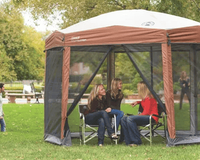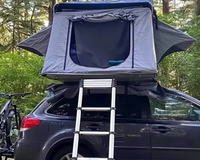Choosing the right sleeping bag is key to enjoying a peaceful night in the forest. Fortunately, for car camping, you don't need to worry about weight or pack sleeping bags into backpacks, so you can choose styles that are as comfortable or spacious as possible.
So, what is the difference between camping sleeping bags and backpack travel sleeping bags?
Overall, camping sleeping bags provide ample activity space, while backpack travel sleeping bags are lightweight and close fitting. If you plan to use the same sleeping bag for both activities, choosing a backpack travel style sleeping bag is wise because you need it to be lightweight enough to carry in your backpack. To learn more about the selection of outdoor backpack travel sleeping bags, you can read 'How to Choose a Backpack Travel Sleeping Bag'.

Understanding Sleeping Bag Temperature Ratings
Because you can always unzip a bag that feels too warm, you should pick a sleeping bag with a lower temperature rating than the lowest nighttime temperature you expect where you plan to camp. If you will use your bag into the colder months of the year, look at bags that can handle lower temperatures:
All this said, be aware that temperature ratings, which are based on an "average sleeper," mainly allow you to compare bags to one other. A wide range of other factors affect how you'll really feel once you're outdoors: your sleeping pad, what you wear sleeping, humidity and wind, your metabolism and more.
Choosing a Sleeping Bag Shape

In general, campers want bags that offer ample room to stretch out and roll over, which is why so many camping bags have a simple rectangular design. It's hard to predict if you feel a bag is roomy enough without zipping yourself inside a bag. So, it's a good idea to go to an REI store to "try on" different bags to see which bag styles feel most comfortable to you. Sleeping bags come in three basic shapes:

Rectangular sleeping bag: This type of sleeping bag provides ample stretching space for the legs and arms; Some can even be fully unfolded and used like a comfortable blanket.
Half rectangular: also known as "modified mummy" or "barrel shaped", this design encompasses multiple shapes and provides a compromise between warmth and spaciousness.
Mummy type: In order to increase warmth and reduce weight, this sleeping bag design closely fits the body - you roll with the sleeping bag instead of inside it.
Double sleeping bag: A sleeping bag designed for couples planning to sleep together is the best choice. Another option is to choose rectangular sleeping bags that can be connected together - these sleeping bags need to be of the same model and brand. Some sleeping bags can also be connected together by selecting a right zipper and a left zipper.
Children's size sleeping bags: These are just shorter, smaller, and more affordable variants of adult sleeping bags.
Choosing a Sleeping Bag Insulation Type
The big choice here is whether you want a bag that's insulated with down fill or synthetic fill. Below is a rundown on the benefits of each insulation:
A note about ethical down: Most brands take steps to monitor the treatment of ducks and geese that provide down. You can identify a bag from one of those manufacturers when you see it labeled as either RDS (Responsible Down Standard) or TDS (global Traceable Down Standard). To learn about what goes into those standards, read Animal Welfare and Outdoor Gear.
Additional Sleeping Bag Features
Sleeping bag shell: The outer fabric of a sleeping bag is usually made of durable polyester or nylon and has a durable waterproof treatment (DWR) to protect the insulation material inside from moisture. Inside the sleeping bag, you will find materials with a soft and warm touch.
Sleeping bag hood: A close fitting hood can keep the sleeping bag warmer, so you are more likely to find a hood in sleeping bags with lower temperature ratings.
Zipper feature: Choose a sleeping bag with multiple zipper sliders to easily adjust ventilation. In addition, some sleeping bags prevent the zipper from getting stuck by installing protective covers along the entire length of the zipper; Others solve this problem by covering the zipper itself.
Storage bag: Some sleeping bags also provide a convenient zippered storage space, which can be used to store small items such as watches or lipstick.
Sleeping bag accessories
Compression bag: Storing sleeping bags in compression bags will take up less space when stored in vehicles.
Storage bag: Flattening sleeping bags in compressed bags for a long time is not conducive to insulation materials, so many sleeping bags also come with a large mesh or cotton storage bag for long-term storage.
Sleeping bag lining: Placing a soft sleeping bag lining inside the sleeping bag not only helps keep it clean, but also adds extra warmth when needed. Camping in hot weather? You can sleep directly in the inner lining without using a sleeping bag.













